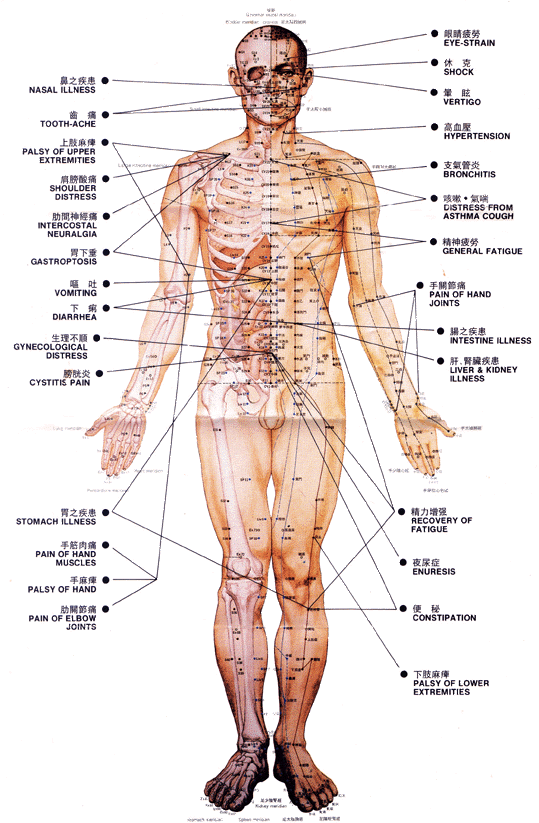Let's Be Honest About Dry Needling
Earlier this year, the Acupuncture Association of Colorado (AAC) filed a lawsuit against the Colorado branch of American Physical Therapy Association (APTA) for the "unsafe use of Dry Needling." Why? Because less than 200 acupuncturists in the state of Colorado who are members of the AAC have determined that dry needling done by physical therapists is unsafe due to the lesser amount of training in needling than a licensed acupuncturist (1). Before I give you my opinion, I will try to lay out the facts...
First, what is the difference between dry needling and acupuncture? Dry needling is the insertion of a needle into a tight muscle (and/or a trigger point). Nothing more; nothing less. Often, the needle is twisted and manipulated until a fasciculation (or a twitch occurs). This stimulates a release of endogenous natural opioids and endorphin's which help with pain but not with inflammation.
Acupuncture, on the other hand, is designed to be a whole system. Two people with elbow pain may come in and receive two different types of treatments with needles in different locations based upon a differential diagnosis, or what the practitioner determines is the cause of the elbow pain. Acupuncture uses distal points, or channel points, which are acupuncture points that have certain functions and tend to run along nerves and blood vessels (2). Because of these distal points, acupuncture has been shown to affect several different areas of the brain, including the prefrontal cortex, the cingulate gyrus, and the sensory cortex. It's common in acupuncture to insert needles into the areas where it hurts to perform classic dry needling in conjunction with traditional acupuncture. Dry needling is only used for pain, while acupuncture is used for pain, decreasing inflammation, balancing hormones, regulating organ functions, and much more.
Why do PT's want to do dry needling in the first place? They are experts at assessing the physical body for musculoskeletal dysfunction, and they often suggest or prescribe therapies like exercises to help with those problems and pains. Often, patients complain, though, that they aren't getting out of pain as quickly as they would like. So, PT's needed another therapy to add to their toolbox to help patients overcome pain faster. First let's talk about the facts.
There are actually not a whole lot of facts the two professions can agree on when it comes to safety. Acupuncturists on the board have claimed there were about 10 lawsuits against PT's in Colorado in the past seven years, while PT's claim there have been zero! Dry needling is significantly more aggressive than your typical acupuncture treatment, but the verdict is still out about what the real numbers are. I can tell you this: the incidences of needle injuries from licensed acupuncturists are significantly less nationwide than that of lawsuits against PT's and dry needling.
Now it's time for my opinion and soapbox. Hope you're ready! I feel, as a medical provider, we should first, "do no harm." I strongly feel that if you are untrained and under educated about a particular therapy, it is in the patient's best interest that you allow the patient to seek care from a professional. In the real world, this doesn't always work. For example, here in Evergreen, we are limited on the number of professionals, so people tend to seek help wherever they can find it. Continually I am in the business of care. I am not in the business of medicine. I do not put my business and financial needs above the patient's. This is not true for everyone. I strongly feel that I must do whatever I can to protect, heal, and help my patients however I can. I also feel that most PT's feel the same way. They want their patients to get better. I would never want to be a part of something that would take away the ability of PT's to help their patients. PT's help my patients more than any other medical profession out there. They have a doctoral level of education and in Colorado they have practiced dry needling since 2007.
I think if a patient is in need of pain relief, they must understand the risks of dry needling and the differences between that and acupuncture. Dry needling is significantly more painful than acupuncture, but sometimes can be more effective for pain. I would never disallow a patient help. I have also seen in my own profession of acupuncture, the lack of ability to perform basic musculoskeletal exams, some lack of basic anatomy knowledge, and I have yet to find a licensed acupuncturist outside of my doctoral cohorts who performs true dry needling for pain. I am beyond saddened by this. This is why I am not a part of this lawsuit, nor will I ever be. My specialty is needle techniques. I am one of the few acupuncturists in the state who do "free-hand needling," and I combine both traditional Chinese acupuncture, using distal points, with dry needling and medical acupuncture. My goal is to train other acupuncturists to offer this service. I feel, if you are going to sue a profession for needling, you must first practice your own profession at its best. With that said, I hope you all can make the best informed decision for your own unique condition.
(1) dpo.st/2p0jR3P
(2) Filshie J, White A. Medical Acupuncture: A Western Scientific Approach. London, UK: Chuchill Livingston; 2006:70
When you subscribe to the blog, we will send you an e-mail when there are new updates on the site so you wouldn't miss them.


Comments